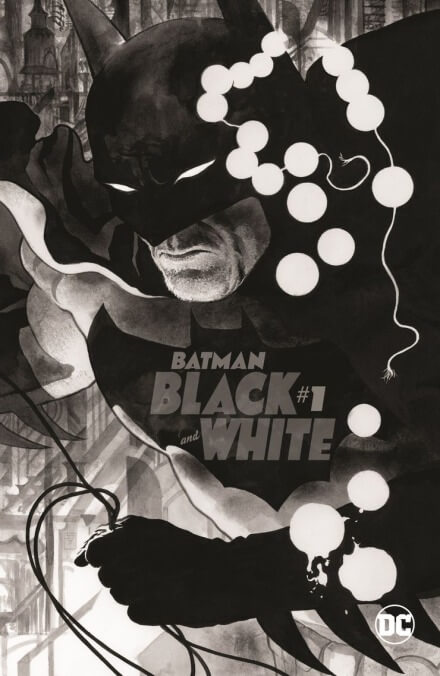Batman Black And White #1 is good, but not as good as its namesake

Beloved anthology series Batman Black And White is back, with a brand-new issue featuring five short stories from five different all-star teams. Batman Black And White first appeared as an anthology series in 1996, featuring talented writers and artists like Bruce Timm, Joe Kubert, and Walter Simonson. This 2020 issue promises a new generation of stellar creators, including James Tynion IV, J.H. Williams III, and Emma Ríos. But when a masterpiece is relaunched, expectations are understandably high—and this first issue doesn’t quite rise to meet them.
Batman Black And White #1 certainly looks like a prestige comic, as artists step away from the monthly superhero norm to play with more complex page layouts in the stripped-down color schemes of white, black, and grey. Even the way the art is presented, with the blacks not fully saturated so the marker strokes are still visible, signal that this issue is trying something different. The artists all appear to push at the boundaries of how to tell a superhero story in their own unique ways, and the art is certainly the issue’s strength.
The weakness of the issue, however, is in the approaches to Batman himself. When telling stories about any classic character, it’s tempting to return to the same themes and events that have resonated for so long. But those themes have already been explored in depth, multiple times before. What this issue lacks is the new.
Of the individual stories themselves, “The Demon’s Fist” (written by James Tynion IV, with art by Tradd Moore, lettered by Clayton Cowles) is a collection standout: Moore’s art is compellingly strange and loopy and works well as it looks at Batman from an enemy’s perspective. “Sisyphus” (written and drawn by Emma Ríos with letters from Steve Wands) features the most beautiful art of the issue. Ríos’ work invades every corner of the page, swallowing the story and its protagonist into darkness. Ríos makes the most use of working in black and white, as her images echo and double throughout her sprawling pages.
But while “Metamorphosis” (written by G. Willow Wilson, art from Greg Smallwood, letters from Clem Robins) likely has the most conventional artwork in the issue (though Smallwood delivers pristine and clear storytelling), the story tackles Batman directly, examining him in a more complicated and ambiguous light than the others. That insightful approach makes this story the most narratively satisfying of the five.
The existence of “Metamorphosis” in this collection indicates that the issue could have asked tougher questions about the parts of the Batman story we take for granted, probing a little deeper into the impact of the world’s greatest detective. “Metamorphosis” pushes back at the Batman mythos, and something surprising comes out. That sense of the unexpected is missing from most of the issue.
Batman Black And White #1 is still worth reading, and the stories inside are definitely worth more than the cover price. But while the issue contains strong narratives, it lacks the imaginative power to make readers fall in love with the legendary character the way the original Batman Black And White did.
